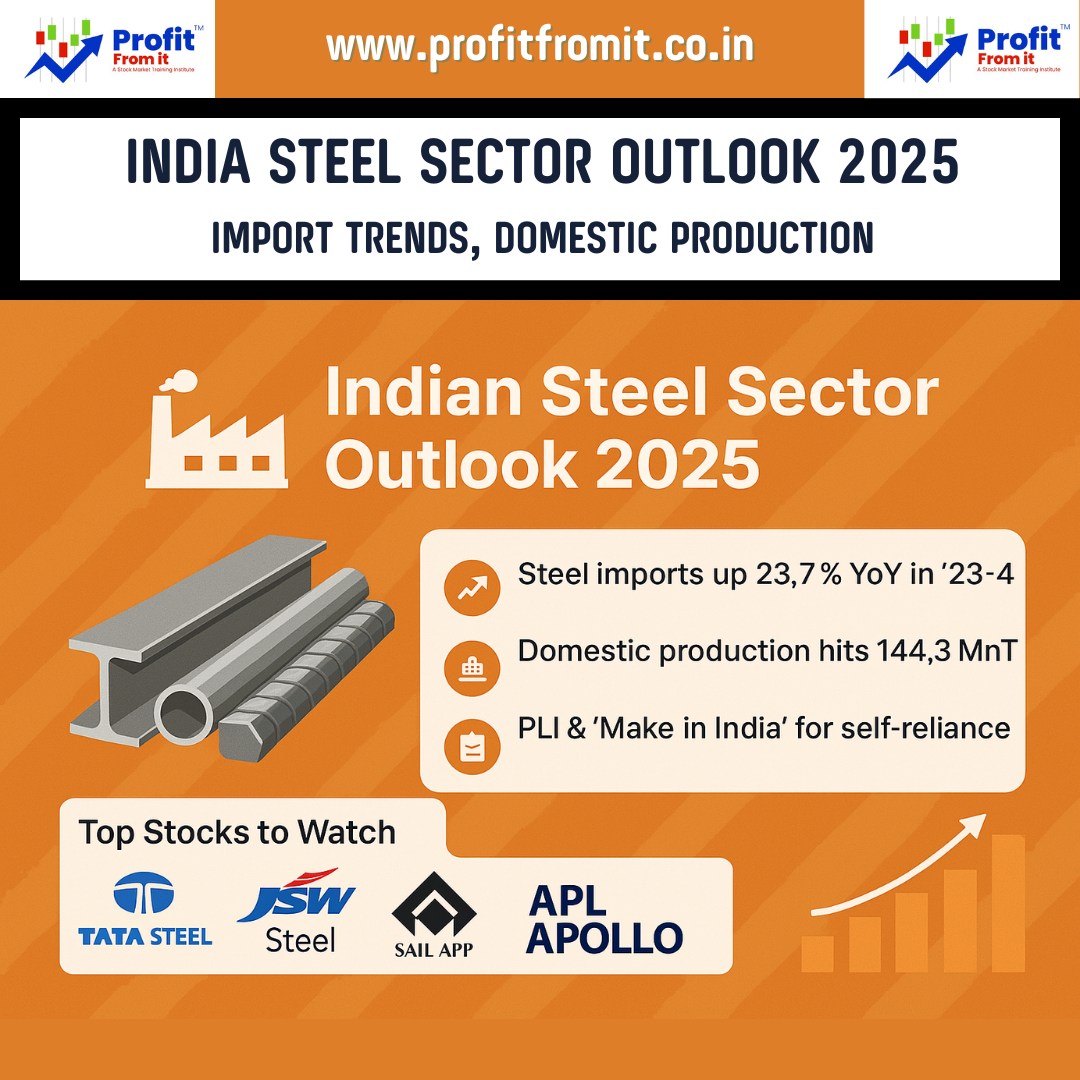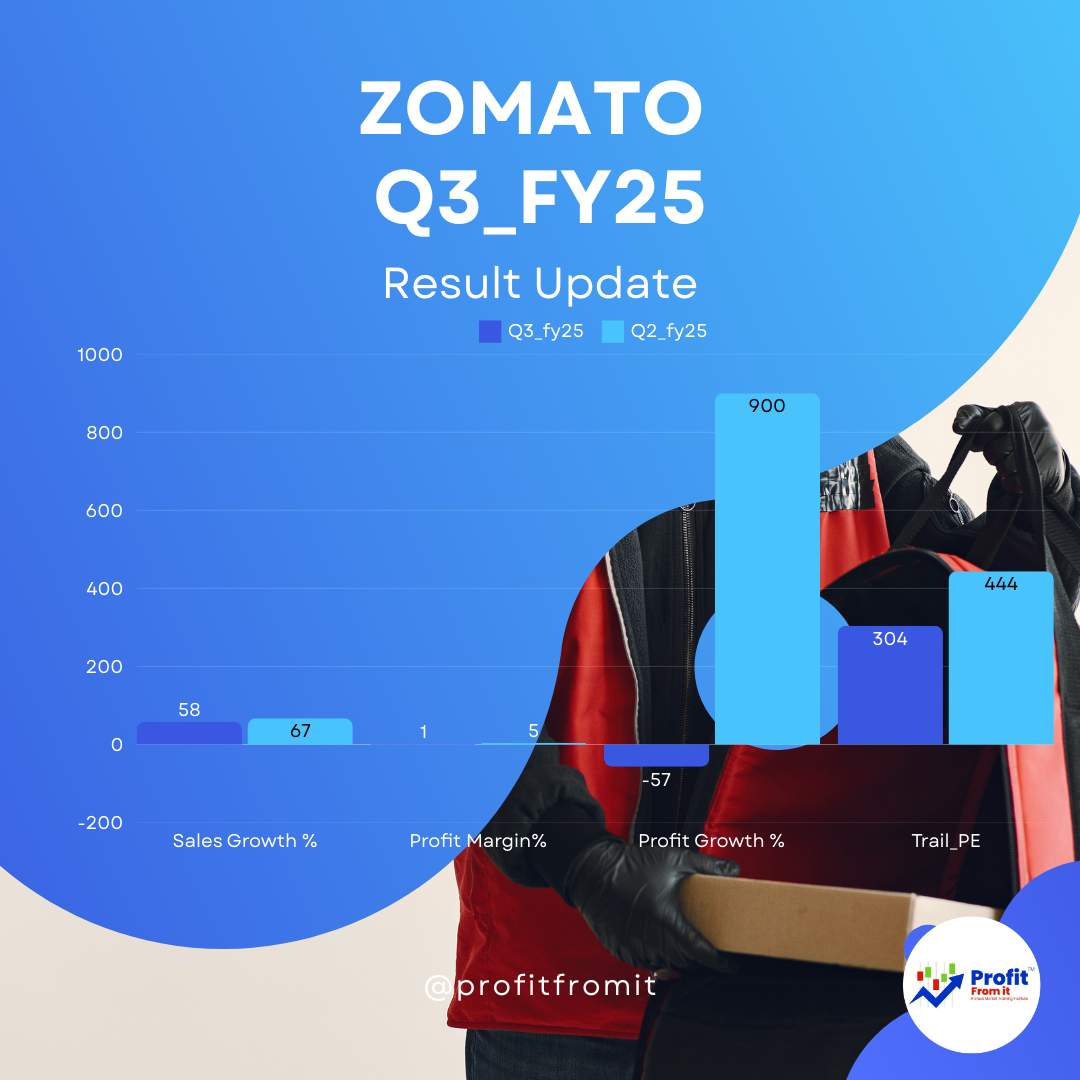
🏗️ Steel Sector Snapshot
India’s steel industry continues to solidify its global presence, backed by rising domestic production and strategic policy interventions. As a long-term investor, understanding both import dynamics and domestic production trends is crucial for identifying structural trends and stock market opportunities.
📉 Import Trends: A Strategic Concern
🛬 Import of Finished Steel (Total)
🔍 Key Observations:
🏭 Domestic Crude Steel Production: Rising Momentum
| Year | Production (MnT) |
|---|---|
| 2019-20 | 109.14 |
| 2020-21 | 103.54 |
| 2021-22 | 120.29 |
| 2022-23 | 127.20 |
| 2023-24 | 📈 144.30 |
✅ The CAGR of ~7.2% over 5 years demonstrates India's strong infrastructure-led growth and industrial expansion.
🌍 Country-wise Analysis of Steel Imports (YoY Trend)
🔝 Countries with High YoY Increase:
🇨🇳 China: Imported 2,687 ('000 tonnes) in FY24 vs. 1,407 in FY23
🟢 +91.0% – Significant surge; indicates growing dependency and price advantage.
🇯🇵 Japan: Imported 1,274 ('000 tonnes) in FY24 vs. 841 in FY23
🟢 +51.5% – Strong rise due to specialty steel demand.
🇰🇷 South Korea: Imported 2,670 ('000 tonnes) in FY24 vs. 2,228 in FY23
🟢 +19.8% – Consistent partner in automotive-grade steel.
🇻🇳 Vietnam: Imported 737 ('000 tonnes) in FY24 vs. 320 in FY23
🟢 +130.3% – Massive rise; emerging low-cost supplier.
🇹🇼 Taiwan: Imported 185 ('000 tonnes) in FY24 vs. 163 in FY23
🟢 +13.5% – Stable contributor in alloy and flat steel products.
🇦🇹 Austria: Imported 52 ('000 tonnes) in FY24 vs. 10 in FY23
🟢 +420.0% – Sharp increase; could be project-specific.
🇳🇵 Nepal: Imported 120 ('000 tonnes) in FY24 vs. 59 in FY23
🟢 +103.0% – More than doubled; potential re-routing of trade.
📉 Countries with Declining Imports:
🇩🇪 Germany: 80 ('000 tonnes) in FY24 vs. 112 in FY23
🔴 -28.6% – Declining relevance due to high costs and Asian competition.
🇮🇹 Italy: 23 ('000 tonnes) in FY24 vs. 31 in FY23
🔴 -25.8% – Decreasing market share in general-grade steel.
🇷🇺 Russia: 53 ('000 tonnes) in FY24 vs. 313 in FY23
🔴 -83.1% – Major drop, likely due to geopolitical disruptions and trade rerouting.
🇫🇷 France: 15 ('000 tonnes) in FY24 vs. 77 in FY23
🔴 -80.5% – Likely substitution by cost-efficient suppliers.
🧩 Government Initiatives
📈 Investment Insights: What This Means for Investors
🔑 Sectoral Impact
📊 Top Listed Steel Companies to Watch 🧐
Here’s a curated list of companies benefitting from domestic steel demand and policy push:
| 📌 Company Name | 💡 Focus Area | 🏆 Key Edge |
|---|---|---|
| Tata Steel (NSE: TATASTEEL) | Integrated steel, domestic + Europe ops | Global footprint + tech-driven |
| JSW Steel (NSE: JSWSTEEL) | Large-scale steel production | PLI participant, agile expansion |
| SAIL (NSE: SAIL) | Government-owned, massive capacity | Policy beneficiary |
| Jindal Steel & Power (NSE: JINDALSTEL) | Long steel products + energy integration | Strong cost control |
| APL Apollo Tubes (NSE: APLAPOLLO) | Structural steel tubing | Niche player, realty demand proxy |
| Shyam Metalics (NSE: SHYAMMETL) | Ferro alloys + sponge iron | High-margin business |
| Ratnamani Metals (NSE: RATNAMANI) | Specialty pipes (oil & gas) | Premium segment |
📈 These companies are strategically aligned with India's infrastructure growth, manufacturing revival, and exports potential.
🧠 Long-Term Investor Strategy
✅ Portfolio Inclusion Criteria:
🧾 Potential Themes:
📉 Risks & Considerations
📌 Disclaimer
🔍 This article is for educational and informational purposes only. It does not constitute investment advice or a recommendation to buy/sell any security. Investors must consult their financial advisor and conduct independent research before making any investment decisions.
📝 Final Thoughts
The Ministry of Steel’s latest data paints a compelling picture of a sector in transition. While imports rise in the short term, India’s policy focus on quality and self-reliance is laying the foundation for long-term value creation.
Steel Sector Insights 2025: Navigating Imports, Production & Investment Opportunities 📊
2019-20: 6.77 MnT
2020-21: 4.75 MnT
2021-22: 4.67 MnT
2022-23: 6.02 MnT
2023-24: 🚀 8.32 MnT (🔺 Highest in 5 years)
China 🇨🇳 remains the largest exporter of finished steel to India (2.69 MnT in 2023-24).
Imports from Japan 🇯🇵, Vietnam 🇻🇳, and South Korea 🇰🇷 have also surged.
Rise in imports, despite higher domestic production, indicates cost or quality advantages in specialty steel or supply-demand mismatches.
Short-Term: Higher imports may pressure domestic margins, especially in commodity-grade steel.
Medium to Long-Term:
PLI & Make in India incentives will strengthen the specialty steel ecosystem.
Demand from real estate, infrastructure, and automotive will continue supporting volume growth.
Strong domestic presence
Operational efficiency
Capacity expansion plans under PLI
Exposure to specialty and value-added steel
🇮🇳 "India Build Story" (Capex-led growth)
🌍 "Global China+1 Shift" (diversified sourcing)
🔬 "Specialty Materials Supercycle"
📊 As an investor, this is the moment to identify the outperformers — companies that are not just producing steel, but shaping the future of India's industrial backbone.



 for Investors The provided chart outlines key metrics for Nifty 500 companies across different periods (FY22 t.png)





